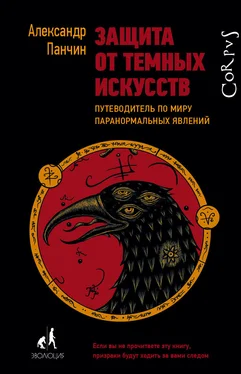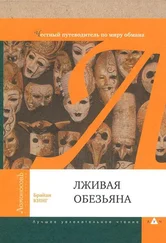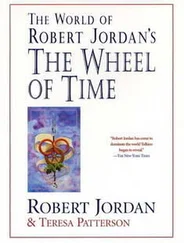Lafferty K. D., Shaw J. C.: Comparing mechanisms of host manipulation across host and parasite taxa . J Exp Biol 2013, 216 (Pt 1): 56–66.
Johnson R.: The pathogenesis of experimental rabies. In Nogano Y., Davenport F. M. (Eds.): Rabies . 1971.
Jackson A. C.: Diabolical effects of rabies encephalitis . J Neurovirol 2016, 22 (1): 8–13.
da Silva R. C., Langoni H.: Toxoplasma gondii: host-parasite interaction and behavior manipulation . Parasitol Res 2009, 105 (4): 893–898.
Vyas A. et al.: Behavioral changes induced by Toxoplasma infection of rodents are highly specific to aversion of cat odors . Proc Natl Acad Sci USA 2007, 104 (15): 6442–6447.
Kaushik M. et al.: What makes a feline fatal in Toxoplasma gondii’s fatal feline attraction? Infected rats choose wild cats . Integr Comp Biol 2014, 54 (2): 118–128.
McConkey G. A. et al.: Toxoplasma gondii infection and behaviour – location, location, location? J Exp Biol 2013, 216 (Pt 1): 113–119.
Gatkowska J. et al.: Behavioral changes in mice caused by Toxoplasma gondii invasion of brain . Parasitol Res 2012, 111 (1): 53–58.
Konradt C. et al.: Endothelial cells are a replicative niche for entry of Toxoplasma gondii to the central nervous system . Nat Microbiol 2016, 1: 16001.
Visualizing a parasite crossing the blood-brain barrier. www.youtube.com/watch?v=spRr1TrUckY
Vyas A.: Mechanisms of host behavioral change in Toxoplasma gondii rodent association . PLoS Pathog 2015, 11 (7): e1004935.
Hari Dass S. A., Vyas A.: Toxoplasma gondii infection reduces predator aversion in rats through epigenetic modulation in the host medial amygdala . Mol Ecol 2014, 23 (24): 6114–6122.
Gaskell E. A. et al.: A unique dual activity amino acid hydroxylase in Toxoplasma gondii . PLoS One 2009, 4 (3): e4801.
Prandovszky E. et al.: The neurotropic parasite Toxoplasma gondii increases dopamine metabolism . PLoS One 2011, 6 (9): e23866.
Martin H. L. et al.: Effect of parasitic infection on dopamine biosynthesis in dopaminergic cells . Neuroscience 2015, 306: 50–62.
Wang Z. T. et al.: Reassessment of the role of aromatic amino acid hydroxylases and the effect of infection by Toxoplasma gondii on host dopamine . Infect Immun 2015, 83 (3): 1039–1047.
Beaulieu J. M., Gainetdinov R. R.: The physiology, signaling, and pharmacology of dopamine receptors . Pharmacol Rev 2011, 63 (1): 182–217.
LeWitt P. A.: Levodopa therapy for Parkinson’s disease: pharmacokinetics and pharmacodynamics . Mov Disord 2015, 30 (1): 64–72.
Pappas G. et al.: Toxoplasmosis snapshots: global status of Toxoplasma gondii seroprevalence and implications for pregnancy and congenital toxoplasmosis . Int J Parasitol 2009, 39 (12): 1385–1394.
Sutterland A. L. et al.: Beyond the association. Toxoplasma gondii in schizophrenia, bipolar disorder, and addiction: systematic review and meta-analysis . Acta Psychiatr Scand 2015, 132 (3): 161–179.
Jones-Brando L. et al.: Drugs used in the treatment of schizophrenia and bipolar disorder inhibit the replication of Toxoplasma gondii . Schizophr Res 2003, 62 (3): 237–244.
Goodwin D. G. et al.: Evaluation of five antischizophrenic agents against Toxoplasma gondii in human cell cultures . J Parasitol 2011, 97 (1): 148–151.
Fond G. et al.: Comparative analysis of anti-toxoplasmic activity of antipsychotic drugs and valproate . Eur Arch Psychiatry Clin Neurosci 2014, 264 (2): 179–183.
Calipari E. S., Ferris M. J.: Amphetamine mechanisms and actions at the dopamine terminal revisited . J Neurosci 2013, 33 (21): 8923–8925.
Sitte H. H., Freissmuth M.: Amphetamines, new psychoactive drugs and the monoamine transporter cycle . Trends Pharmacol Sci 2015, 36 (1): 41–50.
Bramness J. G. et al.: Amphetamine-induced psychosis – a separate diagnostic entity or primary psychosis triggered in the vulnerable? BMC Psychiatry 2012, 12: 221.
Bell V. et al.: Explaining delusions: a cognitive perspective . Trends Cogn Sci 2006, 10 (5): 219–226.
Siddle R. et al.: Religious delusions in patients admitted to hospital with schizophrenia . Soc Psychiatry Psychiatr Epidemiol 2002, 37 (3): 130–138.
Diana M.: The dopamine hypothesis of drug addiction and its potential therapeutic value . Front Psychiatry 2011, 2: 64.
Denys D. et al.: Dopaminergic activity in Tourette syndrome and obsessive-compulsive disorder . Eur Neuropsychopharmacol 2013, 23 (11): 1423–1431.
Cox J. J. et al.: Congenital insensitivity to pain: novel SCN9A missense and in-frame deletion mutations . Hum Mutat 2010, 31 (9): E1670–1686.
Flinspach M. et al.: Insensitivity to pain induced by a potent selective closed-state Nav 1.7 inhibitor . Sci Rep 2017, 7: 39662.
Karsdorp F., van den Bosch A.: The structure and evolution of story networks . R Soc Open Sci 2016, 3 (6): 160071.
VanArsdale D.: Chain letter evolution. 2016. www.silcom.com/~barnowl/chain-letter/evolution.html
Budge E.: The Gods of the Egyptians: Or, Studies in Egyptian Mythology . 1904.
Dawkins R.: The Selfish Gene . 1976.
Szathmary E.: The evolution of replicators . Philos Trans R Soc Lond B Biol Sci 2000, 355 (1403): 1669–1676.
Tillmann B., Dowling W. J.: Memory decreases for prose, but not for poetry . Mem Cognit 2007, 35 (4): 628–639.
Porubanova M. et al.: Memory for expectation-violating concepts: the effects of agents and cultural familiarity . PLoS One 2014, 9 (4): e90684.
Mesoudi A.: Cultural evolution: a review of theory, findings and controversies . Evol Biol 2016, 43 (4): 481–497.
Orr H. A.: Fitness and its role in evolutionary genetics . Nat Rev Genet 2009, 10 (8): 531–539.
Panchin A.: Эволюция повсюду. www.youtube.com/watch?v=acC_nWrSEI8
Tehrani J. J.: The phylogeny of Little Red Riding Hood . PLoS One 2013, 8 (11): e78871.
Zipes J.: The Trials and Tribulations of Little Red Riding Hood . 1993.
Fay N. et al.: The fitness and functionality of culturally evolved communication systems . Philos Trans R Soc Lond B Biol Sci 2008, 363 (1509): 3553–3561.
Pagel M.: Human language as a culturally transmitted replicator . Nat Rev Genet 2009, 10 (6): 405–415.
Читать дальше
Конец ознакомительного отрывка
Купить книгу






![Александр Панчин - Гарвардский Некромант [litres]](/books/390749/aleksandr-panchin-garvardskij-nekromant-litres-thumb.webp)



